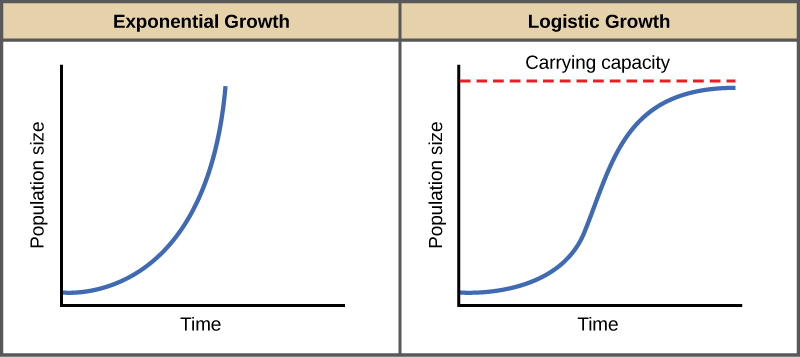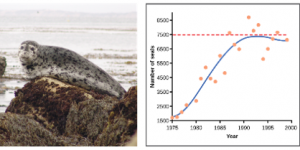6 Ecology and Environmental Biology
6.1 Population
Population
Dr V Malathi
Population is defined as group of individuals of the same species that live in a particular area and interact with each other.
Members within a population share a common gene pool. They can interbreed, in case they are sexually reproducing organisms and are subjected to the same environmental conditions and pressures.
Population studies are fundamental unit of study in ecology, genetics, and evolution. Population studies help to understand how species adapt, survive, and change over time.
Key characteristics of a biological population include:
- Population Size: The number of individuals within the population. Within a particular habitat, a population can be characterized by its population size (N), the total number of individuals, and its population density. For example, populations with more individuals may be more stable than smaller populations based on their genetic variability, and thus their potential to adapt to the environment.
- Population Density: The number of individuals per unit area or volume.
- Population Distribution: The spread of individuals across habitat (e.g., clumped, random, or uniform distribution).
- Gene Pool: The collection of all genetic material (alleles) in a population.
- Population Dynamics: Changes in population size and composition over time, often influenced by birth rates, death rates, immigration, and emigration.
Population research aids in the comprehension of ecological balance, biodiversity, and ecosystem evolution.
1. Population and Biodiversity
The diversity of life forms within an environment is referred to as biodiversity, and populations are its fundamental units. Multiple populations of distinct species are necessary for biodiversity, as they all add to the stability and complexity of an ecosystem. By encouraging distinctive features that adapt to local conditions, genetic variety among populations within a single species also improves biodiversity. Over time, this genetic variety may result in speciation, enhancing the diversity of life forms.
2. Population and Ecology
Populations in ecology interact with their physical surroundings and with one another to form dynamic systems with intricate interactions. Ecological communities are made up of populations of numerous species that perform a variety of functions, including:
Producers that use photosynthesis to generate energy, such as plants.
Consumers that rely on other people for energy, such as herbivores and carnivores.
Decomposers that recycle nutrients back into the environment include bacteria and fungi.
Energy flow and nutrient cycle in ecosystems depend on these functions. Furthermore, population dynamics (growth, decline, and migration) affect ecological balance and resource availability, which in turn affects species distribution and ecosystem stability.
3. Population and Evolution
The fundamental unit of evolution is a population. Natural selection, mutation, genetic drift, and gene flow are the processes that cause evolutionary changes over time within populations. For instance:
Natural Selection: In a population, environmental forces favor particular features, enabling better-adapted individuals to live and procreate. As a result, characteristics gradually shift from generation to generation.
Genetic Drift: Over time, substantial evolutionary shifts may result from haphazard variations in gene frequency, particularly in small populations.
Gene Flow: New genetic material can be introduced by gene flow between populations, which can promote adaptation and possibly result in speciation.
As populations change, new species are produced, increasing biodiversity and the diversity of life forms. Population variations throughout generations are a reflection of the adaption process.
In conclusion, populations are essential for:
biodiversity by promoting species and genetic diversity.
ecology by working together within ecosystems to maintain the flow of nutrients and energy.
evolution by providing the framework for speciation and adaptive modifications.
Populations are responsible for the tenacity, complexity, and ongoing existence of life on Earth through several processes.
Population Growth
Exponential Growth
With the depletion of resources, population growth declines. Exponential expansion is the term used to describe this rapid pattern of population growth.
Bacteria provide the clearest illustration of exponential growth. Prokaryotic fission is how bacteria, which are prokaryotes, reproduce. For many bacterial species, this division takes approximately one hour. A single round of division occurs after an hour, producing 2000 organisms—an increase of 1000—if 1000 bacteria are put in a big flask with an infinite supply of nutrients (so the nutrients won’t run out). Each of the 2000 creatures will double in another hour, resulting in 4000, an additional 2000 organisms. The number of bacteria in the flask should have increased by 4000 to 8000 after the third hour.
The key idea behind exponential growth is that the number of organisms added in each reproductive generation, or the population growth rate, is increasing at an ever-increasing rate. The population would have grown from 1000 to over 16 billion people after one day and twenty-four of these cycles. A J-shaped growth curve is created when the population size, N, is plotted with time.
Logistic Growth
The real world does not have endless natural resources, which is a prerequisite for exponential growth. Individuals will compete (with members of their own or other species) for scarce resources, according to Charles Darwin’s theory of the “struggle for existence.” Because of natural selection, the successful will live to pass on their own features and characteristics—which we now know are passed down through genes—to the following generation more quickly. The logistic growth model was created by population ecologists to simulate the reality of scarce resources.

“Exponential and Logisitic growth” by Shelli Carter and Lumen Learning. is licensed under CC BY 4.0
Test your Understanding


